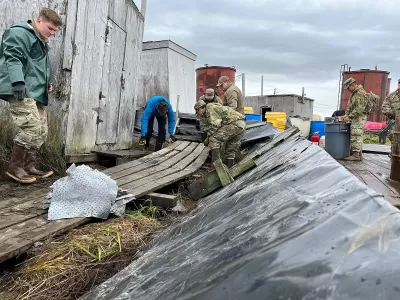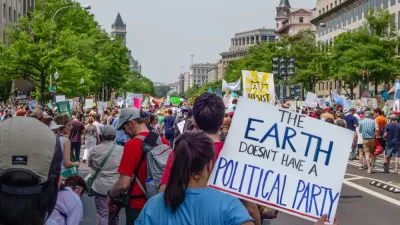Increasingly threatened by the impacts of climate change and extreme weather, many Native Alaskan and other indigenous communities will have to relocate—and soon.

An article by Emily Schwing in High Country News describes the challenges facing Native villages in Alaska and other parts of the United States, where “Melting permafrost, increasing wildfire threats, severe drought and other climate-change related phenomena mean dozens, perhaps hundreds, of small, predominantly Indigenous communities across the nation may need to move.”
The Alaskan village of Newtok only had a nomadic population until the mid 20th century, when federal authorities told Yup’ik residents that they had to settle permanently to access federally funded schools. “But the land in Newtok has never been all that stable: Since the 1950s, the banks of the Ninglick River have been eroding at rates as high as 70 feet per year.” As Schwing notes, the community has been painfully aware of this. “For more than two decades, Newtok has been trying to plan for a full relocation.”
The federal government has started awarding grants to communities needing to relocate. But with a total cost estimated at $120 million or more for the Newtok relocation, how far can a $25 million grant, awarded by the federal government through the Bipartisan Infrastructure Law, go?
The village faces with a slew of costs that won’t be covered by the federal grant. Patrick LeMay, the Newtok relocation project manager, estimates a need of $8 million for additional housing, plus $60 million for a school, $2.3 million for a health clinic, and other infrastructure needs. As the impact of climate change intensifies, more communities will need assistance.
FULL STORY: How far can $25 million go to relocate a community that’s disappearing into Alaska’s melting permafrost?

Alabama: Trump Terminates Settlements for Black Communities Harmed By Raw Sewage
Trump deemed the landmark civil rights agreement “illegal DEI and environmental justice policy.”

Planetizen Federal Action Tracker
A weekly monitor of how Trump’s orders and actions are impacting planners and planning in America.

Why Should We Subsidize Public Transportation?
Many public transit agencies face financial stress due to rising costs, declining fare revenue, and declining subsidies. Transit advocates must provide a strong business case for increasing public transit funding.

Understanding Road Diets
An explainer from Momentum highlights the advantages of reducing vehicle lanes in favor of more bike, transit, and pedestrian infrastructure.

New California Law Regulates Warehouse Pollution
A new law tightens building and emissions regulations for large distribution warehouses to mitigate air pollution and traffic in surrounding communities.

Phoenix Announces Opening Date for Light Rail Extension
The South Central extension will connect South Phoenix to downtown and other major hubs starting on June 7.
Urban Design for Planners 1: Software Tools
This six-course series explores essential urban design concepts using open source software and equips planners with the tools they need to participate fully in the urban design process.
Planning for Universal Design
Learn the tools for implementing Universal Design in planning regulations.
Caltrans
Smith Gee Studio
Institute for Housing and Urban Development Studies (IHS)
City of Grandview
Harvard GSD Executive Education
Toledo-Lucas County Plan Commissions
Salt Lake City
NYU Wagner Graduate School of Public Service





























